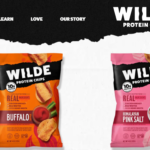I watched an older man buying a huge, heavy bag of dog food at the grocery store. As he struggled to get the bag in his cart, a younger employee came by to help him put the bag in his cart. He checked out in the same lane as me, and I asked him how often he buys that heavy bag of dog food, and he told me it was a monthly chore, and his wife can’t handle the weight of the bag. Marketing empathy means that a brand manager uses both her head and her heart to understand their customers.
We struck up a conversation about shopping, and I asked him why he didn’t order the food online to show up at his door. He said, he didn’t realize that was possible and boy – that would solve a problem he has with stocking up on dog food.
Why don’t you buy smaller bags? He said that the cost difference was about $1.00, and he is on a fixed budget, so he’d rather get the better deal.
Where’s the Brand Manager?
If I worked on this brand, I’d explore several ideas based on an empathic view of marketing. I would spend a lot of time at the point of sale observing and watching people buying products within my category. I’d strike up informal conversations and listen carefully. I’d bring together several work colleagues and several customers to talk together so that the voice of the customer was present.
You never know where a great idea might come from that helps show you are caring. When a marketing person realizes the challenges people face when they purchase their products, that’s when the magic can happen.
Is there friction (heavy bags), are there solutions (lighter bags at same prices). How else could you serve this community? (alternative paths to delivery)
Here are three ideas to consider based on this example:
- Don’t make a price difference between large and smaller bags. Yes, you would have a smaller margin but think of the loyalty that could come from customers when you promote that you want to make it easy for your customers to be able to lift your bag of dog food. Serve the community of people who don’t want to be punished for buying big bags they can’t carry.
- Create a new brand for direct sales focused on lighter bags. Sell it to consumers online so it doesn’t compete with your in-store brand. Target people who can’t lift 50 lbs of dog food but want to buy that same product, at the same price, in lighter-weight bags. The value of a 50 lb bag in 5 small/10 lb bags could be the basis for a new brand’s unique value proposition.
- Organize a consumer advisory board to bring the voice of the consumer to major new initiatives or ideas. Listen to their feedback and use it to help you understand your chances of success. Find ways to get customers and marketing people together to get to know one another and to understand the challenges customer’s face in their daily lives.
When you market from the top down to the consumer, you assume you know everything that motivates a purchase. That level of understanding rarely occurs.
If you market from an empathic, heart-centered approach, you get a deeper understanding of why people buy, what job the product is doing for them and how you can help them stay loyal to your brand.
Are your customer’s sharing a seat at your marketing meetings?
Need an empathetic marketer’s perspective? Searching for fresh ideas to understand your audience’s journey? Text or call me at 919 720 0995 or email me at jeffslater@themarketingsage.com – I am the Chief Listening Officer at The Marketing Sage with 30+ years of business and marketing expertise. Perhaps some seasoned advice could help you with your 2018 marketing plans.
Photo: Courtesy of sweet-ice-cream-photography-321073 on Unsplash




